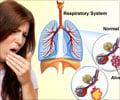The National Lung Screening Trial showed that screening people with a 30 pack-year smoking history could reduce lung cancer mortality by 20% in this population.

‘Lung cancer screening rates remained very low and unchanged among eligible populations in 2015, despite recommendations that high risk current and former smokers be screened.’





Despite these recommendations, the lung cancer screening rates remained very low and unchanged among
eligible populations in 2015. The study by American Cancer
Society investigators appears in JAMA Oncology. The authors say it underscores the need to educate clinicians and those at risk about lung cancer screening.
In 2010, before the recommendation, the National Health Interview Survey (NHIS) found only 2% to 4% of high risk smokers received LCDT in the previous year.
To investigate further, researchers led by Ahmedin Jemal compared responses from the National Health Interview Survey between 2010 and 2015, including only those who would meet the requirements for screening under the USPSTF recommendation.
The study found the proportion of eligible current and former smokers who reported LCDT screening in the past 12 months remained low and constant between the two years, from 3.3% in 2010 to 3.9% in 2015. Based on those figures, the authors estimate that of the 6.8 million current and former smokers eligible for screening in 2015, only 262,700 received it.
"The reasons for the low uptake in screening are probably varied, and likely include lack of knowledge among both smokers and doctors as to screening recommendations as well as access to high quality screening," said Dr. Jemal.
Advertisement
Source-Eurekalert















